Top 10 historical sites & museums in China
China is one of the world’s oldest civilizations and has the oldest continuous civilization. History of China can be dated back to 5,000 years ago. Naturally China is rich in amazing historical sites and relics. Here is a list of 10 best China historical sites and museums each with its unique charm.
1. Museum of Qin Terracotta Warriors and Horses (Xian)
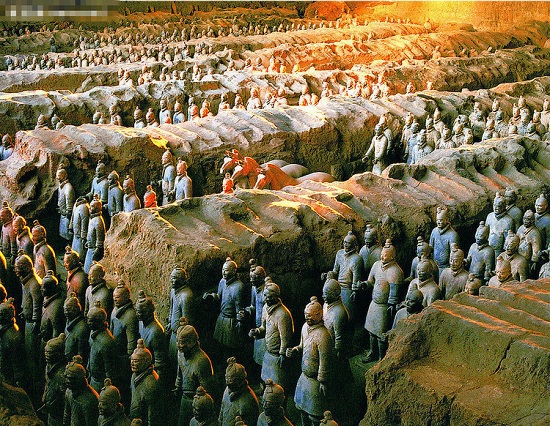 Museum of Qin Terracotta Warriors and Horses is the most significant archeological excavations of the 20th century. It is located in Lintong County, 37.5 kilometers west of Xi’an City. It was put on the list of the UNESCO as a world-class cultural heritage site. It is a sight not to be missed by any visitor to China.
Museum of Qin Terracotta Warriors and Horses is the most significant archeological excavations of the 20th century. It is located in Lintong County, 37.5 kilometers west of Xi’an City. It was put on the list of the UNESCO as a world-class cultural heritage site. It is a sight not to be missed by any visitor to China.
2. The Palace Museum (Beijing)
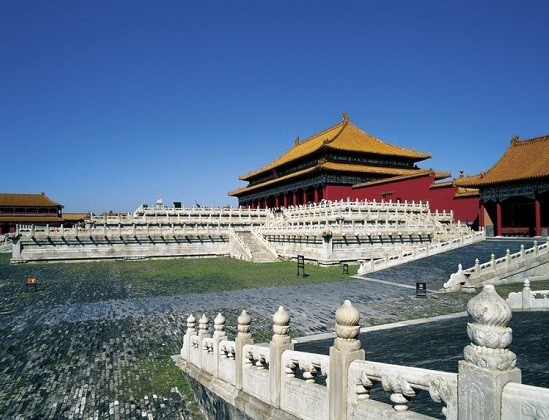 The Palace Museum, also called Imperial Palace Museum, is located in the city center of Beijing. For almost 500 years, it served as the home of emperors and their households, as well as the ceremonial and political center of Chinese government. The museum`s extensive collection of artwork and artifacts were built upon the imperial collections of the Ming and Qing dynasties.
The Palace Museum, also called Imperial Palace Museum, is located in the city center of Beijing. For almost 500 years, it served as the home of emperors and their households, as well as the ceremonial and political center of Chinese government. The museum`s extensive collection of artwork and artifacts were built upon the imperial collections of the Ming and Qing dynasties.
3. Potala Palace Museum (Lhasa)
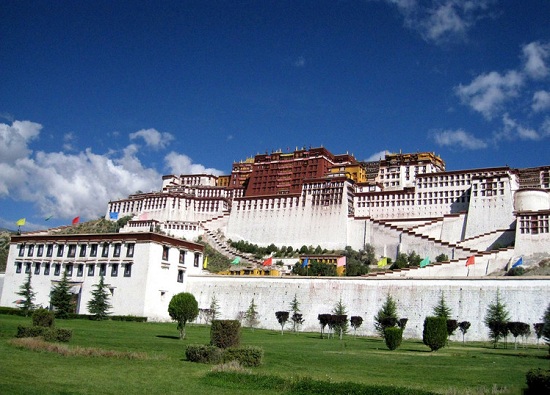 Originally built in 640AD, the Potala Palace rises in red, white, and gold splendor high above the city of Lhasa, dominating the landscape and watching over every aspect of local life. Potala Palace is a state museum and a UNESCO World Heritage Site. It was also recently named one of the “New Seven Wonders of the World” by the television show Good Morning America and the newspaper USA Today.
Originally built in 640AD, the Potala Palace rises in red, white, and gold splendor high above the city of Lhasa, dominating the landscape and watching over every aspect of local life. Potala Palace is a state museum and a UNESCO World Heritage Site. It was also recently named one of the “New Seven Wonders of the World” by the television show Good Morning America and the newspaper USA Today.
4. The Great Wall of China (Beijing)
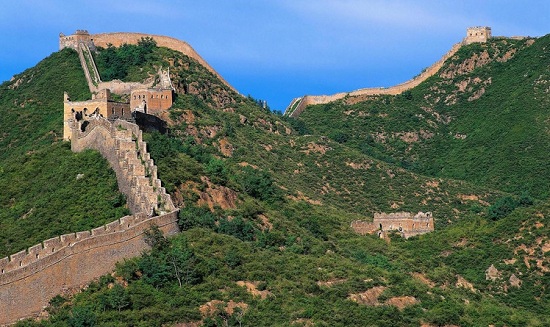 The Great Wall of China is considered to be the only man-made project visible from the moon. The greatest remnant of China is the 6,260km long Great Wall of China. This great barrier has been constructed throughout Chinese history since the 5th century BC.
The Great Wall of China is considered to be the only man-made project visible from the moon. The greatest remnant of China is the 6,260km long Great Wall of China. This great barrier has been constructed throughout Chinese history since the 5th century BC.
5. Forest of Stone Steles Museum (Xian)
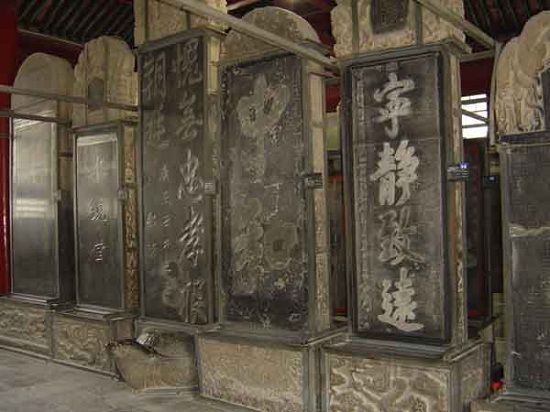 The Forest of Stone Steles in Xi’an is a classical courtyard styled structure at the site of former Confucian Temple. It is one of the centers of ancient Chinese stone-engraving classic. It is also the center of the works of art of noted calligraphers of past dynasties. With a history of over 900 years, it is an art treasure well known at home and abroad.
The Forest of Stone Steles in Xi’an is a classical courtyard styled structure at the site of former Confucian Temple. It is one of the centers of ancient Chinese stone-engraving classic. It is also the center of the works of art of noted calligraphers of past dynasties. With a history of over 900 years, it is an art treasure well known at home and abroad.
6. Dujiangyan Irrigation Project (Chengdu)
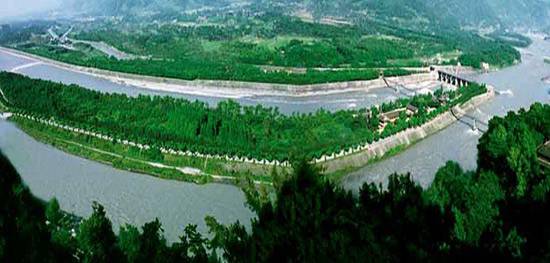 Dujiangyan Irrigation Project is 60 km northwest of Chengdu. It is an amazing feat of engineering and construction and is a UNESCO world heritage site. It was built Qin Dynasty over 2000 years ago and now is still used to irrigate 5,300 square kilometers of land in the region.
Dujiangyan Irrigation Project is 60 km northwest of Chengdu. It is an amazing feat of engineering and construction and is a UNESCO world heritage site. It was built Qin Dynasty over 2000 years ago and now is still used to irrigate 5,300 square kilometers of land in the region.
7. San Kong (Qufu)
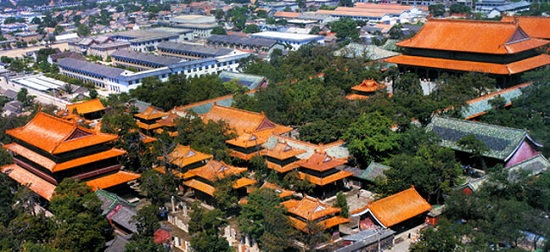 Located in the southwest of Shandong Province, Qufu was the hometown of Confucius (551-479 B.C.). Confucius is the great philosopher, politician and educator in ancient China. San Kong in Qufu refers to Temple of Confucius, Mansion of Confucius, and Cemetery of Confucius, these ancient architectures reflect the essence of Confucianism. San Kong was designated as World Cultural Heritage Site by UNESCO in December, 1994.
Located in the southwest of Shandong Province, Qufu was the hometown of Confucius (551-479 B.C.). Confucius is the great philosopher, politician and educator in ancient China. San Kong in Qufu refers to Temple of Confucius, Mansion of Confucius, and Cemetery of Confucius, these ancient architectures reflect the essence of Confucianism. San Kong was designated as World Cultural Heritage Site by UNESCO in December, 1994.
8. Huaqing Hot Spring (Xian)
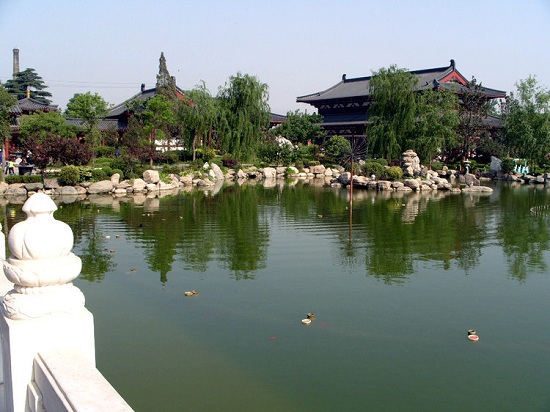 Located 30 kilometers from Xian City, the Huaqing Hot Spring is the bathing pool in Huaqing Palace built in the Tang Dynasty (618-907). Huaqing Hot Spring is famed for both its dainty spring scenery and the romantic love story of Emperor Xuanzong and his concubine Yang Guifei in the Tang Dynasty.
Located 30 kilometers from Xian City, the Huaqing Hot Spring is the bathing pool in Huaqing Palace built in the Tang Dynasty (618-907). Huaqing Hot Spring is famed for both its dainty spring scenery and the romantic love story of Emperor Xuanzong and his concubine Yang Guifei in the Tang Dynasty.
9. Xi`an City Wall (Xi`an)
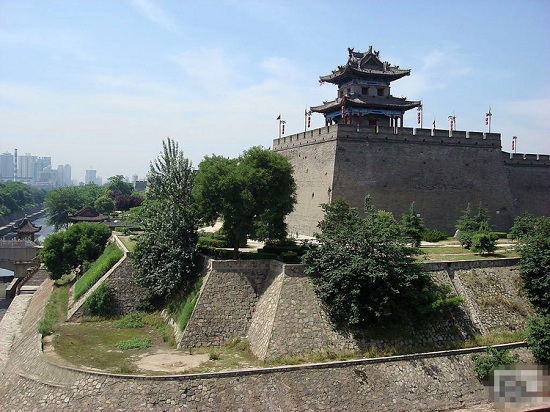 The Ancient City Wall of Xi`an is the most intact ancient Chinese wall in existence. Xian’s ancient City Wall encircles and protects the ancient part of Xi`an City. The city walls here were actually built on the fortifications of the Tang Forbidden City. The military defense facilities here including the city wall, city moat, drawbridges, watchtowers, corner towers, parapet walls and gate towers once made up a complete city defense system.
The Ancient City Wall of Xi`an is the most intact ancient Chinese wall in existence. Xian’s ancient City Wall encircles and protects the ancient part of Xi`an City. The city walls here were actually built on the fortifications of the Tang Forbidden City. The military defense facilities here including the city wall, city moat, drawbridges, watchtowers, corner towers, parapet walls and gate towers once made up a complete city defense system.
10. Sanxingdui Archaeological Site Museum (Sichuan)
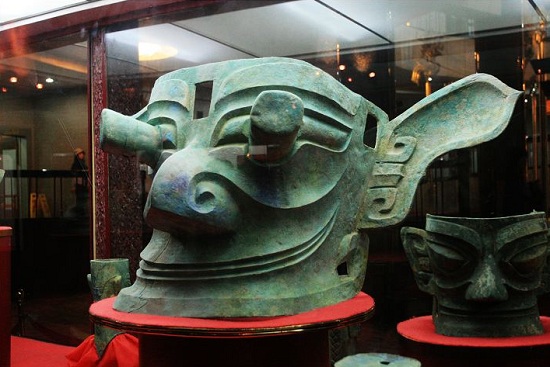 Sanxingdui Archaeological Site Museum is a Bronze Age site located in the town of Guanghan of Sichuan Province. It is famous for its unique bronze sculptures and depict disfigured human faces, birds, eagles, snakes, tigers and bells. Because no written history exists of the Sanxingdui culture, these artifacts are the only link by which archaeologists can study these ancient people that developed independently of other cultures in China at the same time.
Sanxingdui Archaeological Site Museum is a Bronze Age site located in the town of Guanghan of Sichuan Province. It is famous for its unique bronze sculptures and depict disfigured human faces, birds, eagles, snakes, tigers and bells. Because no written history exists of the Sanxingdui culture, these artifacts are the only link by which archaeologists can study these ancient people that developed independently of other cultures in China at the same time.

